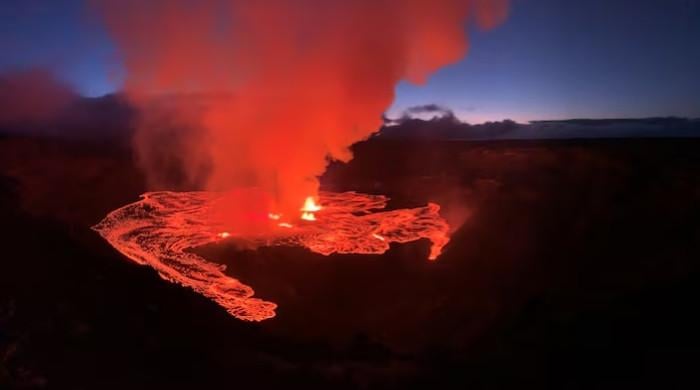Giant crater in Russia's far north sparks mystery
MOSCOW: A vast crater discovered in a remote region of Siberia known to locals as "the end of the world" is causing a sensation in Russia, with a group of scientists being sent to investigate. The...
July 26, 2014
The video can be seen at https://www.youtube.com/watch?v=2kMs05VaOfE. The crater is located in the permafrost around 30 kilometres (18 miles) from a huge gas field north of the regional capital of Salekhard, roughly 2,000 kilometres northeast of Moscow.
The appearance of the mysterious chasm prompted numerous conspiracy theories and speculation that it may have been caused by something otherworldly, with some even suggesting aliens might be behind it.
Initial theories suggesting the crater was caused by a meteorite, however, were dismissed by scientists.
"This does not stand up to any criticism," the deputy director of the Oil and Gas Research Institute of the Russian Academy of Sciences, Vasily Bogoyavlensky, was quoted as saying by Interfax news agency.
He said the crater was likely to have been caused by the melting of underground ice in the permafrost, freeing gas that then built up high pressure and broke through to the surface. "At some point an explosion took place without any flame," Bogoyavlensky said.
In an effort to discover its mysteries, regional governor Dmitry Kobylkin sent a group of scientists into the tundra where the crater is located in the Yamal peninsula -- which translates as "the end of the world", Interfax reported.
Marina Leibman, chief researcher at the Earth Cryosphere Institute, which studies permafrost, was part the team sent to scour the area. "A thorough search showed there were no traces of people or machinery" by the crater, Leibman said in a statement released by local authorities.
She said that the crater could not have been caused by a meteorite because there were no traces of burning around the edge.
"It most likely happened when pressure went up in some cavity containing deposits of marsh gas (methane)," she said.
"So far this is just a hypothesis, the least contradictory one. There is no proof," she cautioned.









